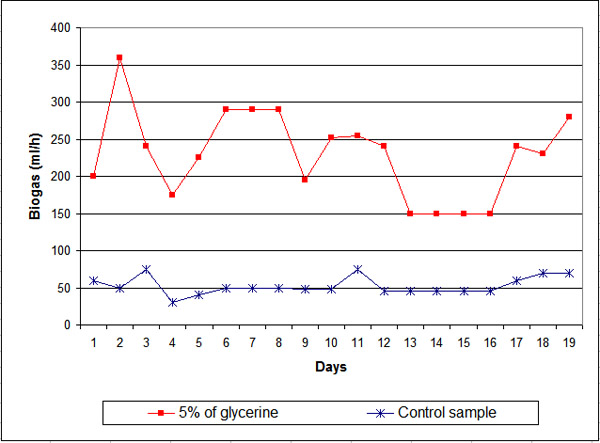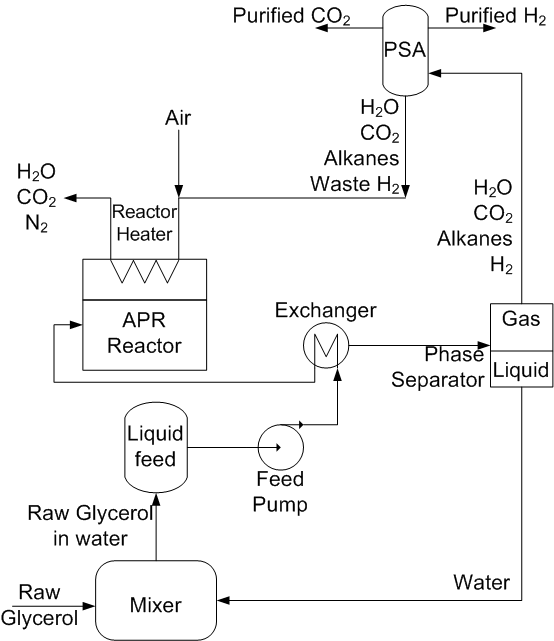Case Study #2
Glycerine Applications
The next step in the methodology adopted was the in-depth analysis of the shortlisted applications. The conclusions of each study are presented as following:
Anaerobic biodigestion
As it can be seen in the following graph, 5% of glycerine added to swine manure increased 300% the production of biogas in a lab experiment. Nevertheless, bigger amounts of glycerine seem to interfere in the biodigestion process , inhibiting micro-organism growth and consequently decreasing the rate of production of biogas.
 |
Figure: Impact of glycerine addition to the feeding of a biodigestor in the production of biogas in a lab experiment [24] |
Consequently, this application is not glycerine-intensive, which means that an enormous amount of manure to consume all glycerine produced in the farm would be needed.
Production of hydrogen via Aqueous Phase Reforming (APR)
This technology is very interesting and allows the production of hydrogen from some carbon compounds, including glycerine. However, some obstacles were identified:
-
Installation is not simple, especially in a farm or other small-scale biodiesel production units.
-
The impact of crude glycerine (and their impurities) in catalyser performance is not clear.
-
The cost of production of hydrogen using this technology is much more expensive than natural gas or diesel.
 |
Process flow diagram of Aqueous Phase Reforming [25] |
Burning as a fuel
Some commercial glycerine burners are now available in the market. It is a simple and traditional technology.
Glycerine generally is burned at least with 12% of waste vegetable oil or biodiesel. This allows the glycerine to be burned in safe temperatures, avoiding the production of toxic compounds.
Considering the energy content of the glycerine sample and three batches of production of biodiesel in the farm per month, around 50,000 kWh/month could be recovered as heating source.
» Go to Glycerine Applications: Recommendations







